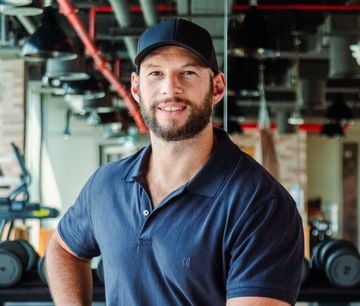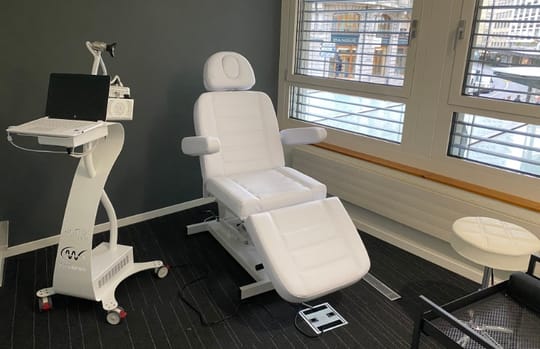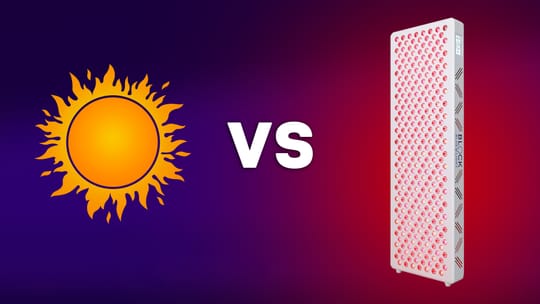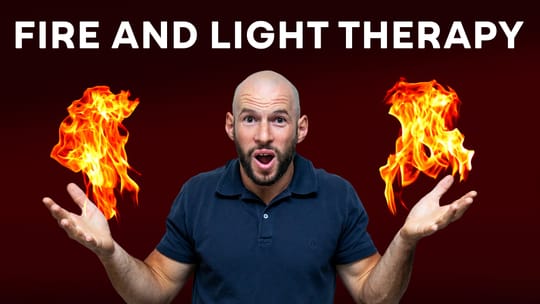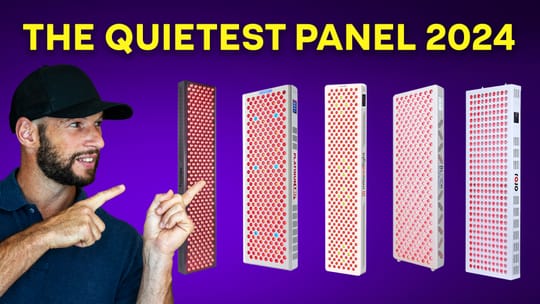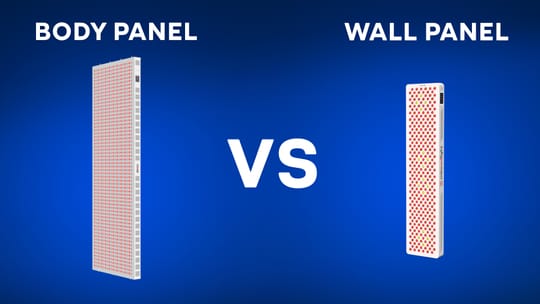How much therapeutic light are you really getting from your red light therapy device? Well, I did some testing and the results are going to shock you! I was quite surprised.
The outcome of my experiments will affect your red light therapy treatment protocols. Also, it will shape future reviews and even how I use my red light therapy panels.
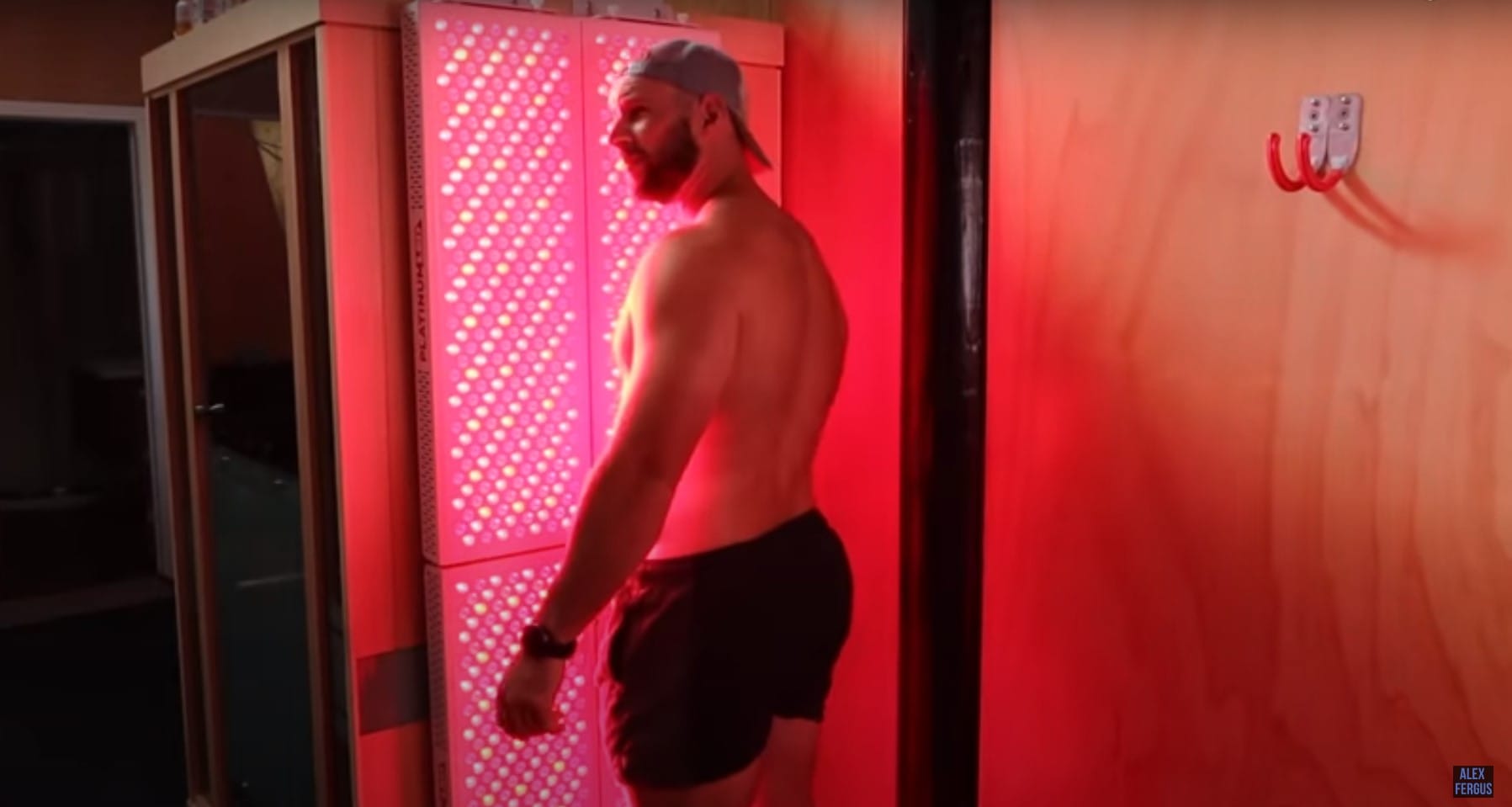
At the end of this article, I will share some practical solutions and takeaways to help you get the most from your red light therapy panel.
When you're shopping for a red light therapy panel, you often see features or specs such as treatment area, LED beam angle, or maybe you'll see a nice little graphic showing how a small panel emits all this light and saturates the whole body.
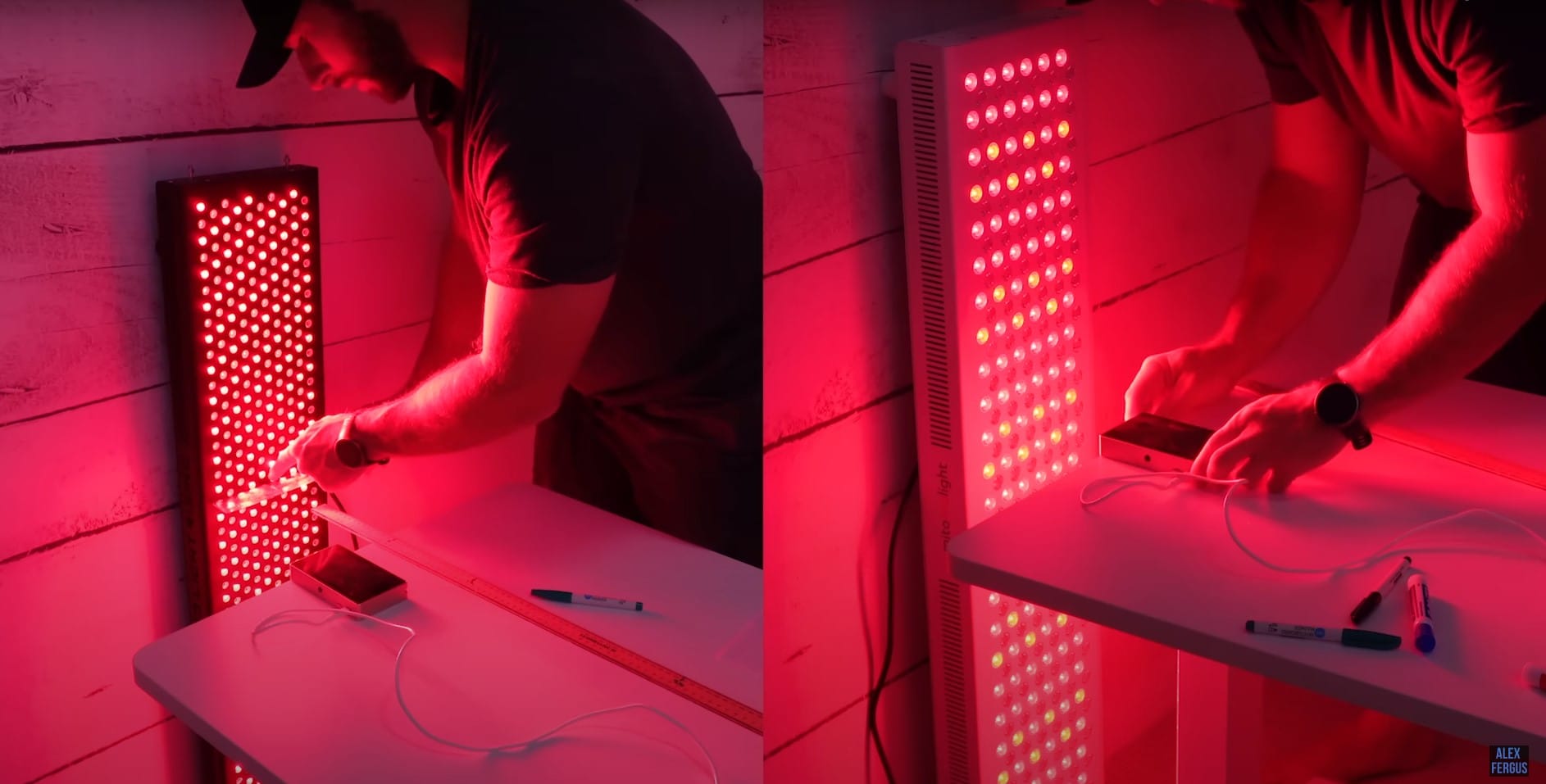
After doing my testing today, I can reveal that all of those claims are rather weak. Here's what I did. I took two large red light therapy body panels:
1) Red Light Rising Advantage 1500 with 500 LEDs (code ALEX saves if you want to buy)
2) Mito Red MitoPRO 1500 with 300 LEDs (code ALEX5 saves if you want to buy)
Coverage Problem Introduction
I used my spectrometer to test how much therapeutic light was being emitted from these panels at various distances.
Once I had all those central 100% peak irradiance figures, I then went back to six inches, and I moved the sensor across the face of the panel. What I was looking for here was to determine what was happening to the light.
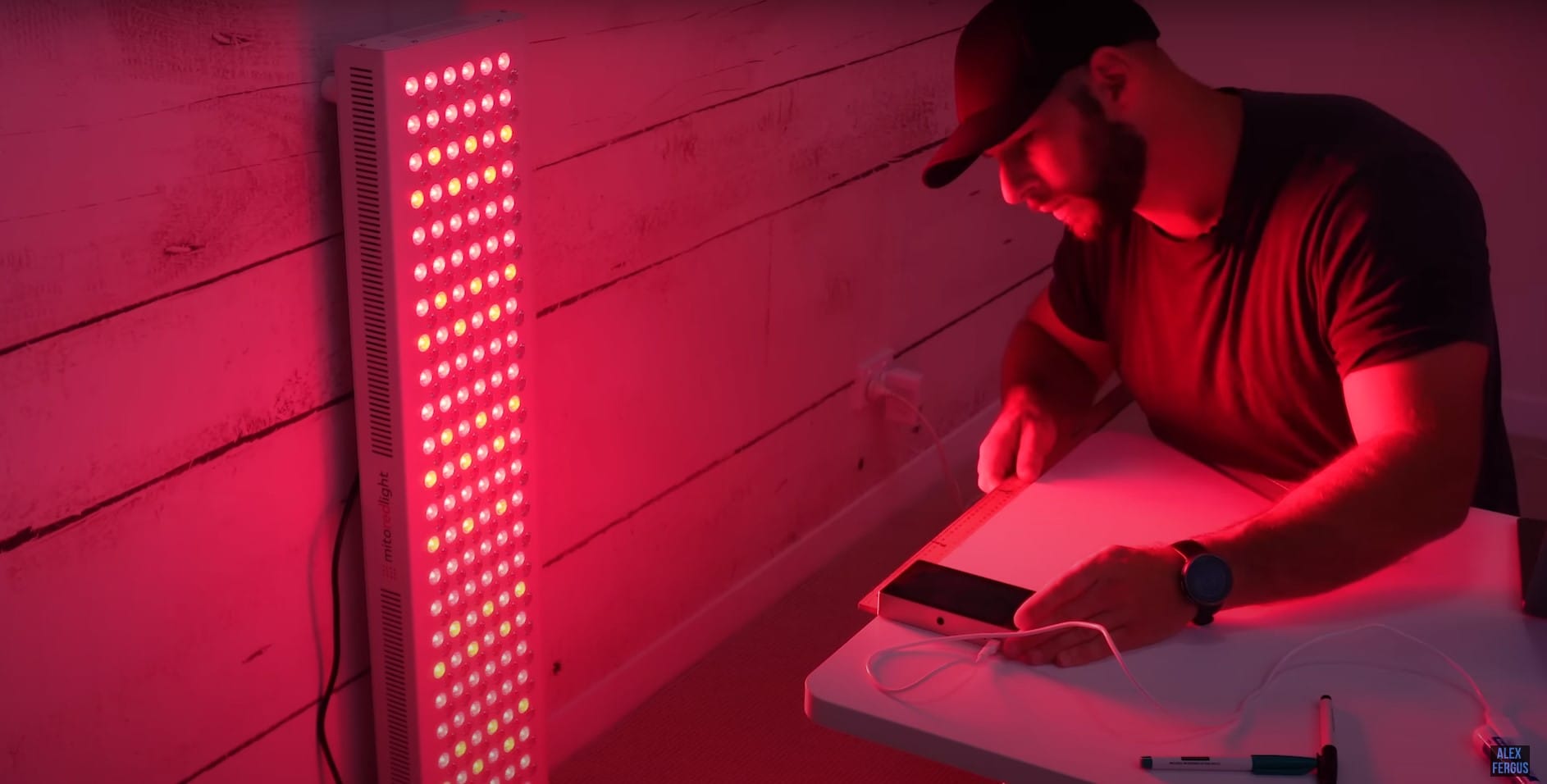
How far out is that 100% intensity light being emitted? Is it only been emitted directly in front of the LEDs, or is it penetrating out at an angle? And if it is at an angle, how much of that light is actually received on the outer edges of the panel?
I did this at 6 inches, 12 inches, and 24 inches. Once I had all this data, I got out the whiteboard, and I drew the outline of my body including the width of my shoulders, torso, and head.
On top of this outline, I drew the shape and size of the LED panel, so you can get a rough idea of how big or how small the panel is in relation to my body.
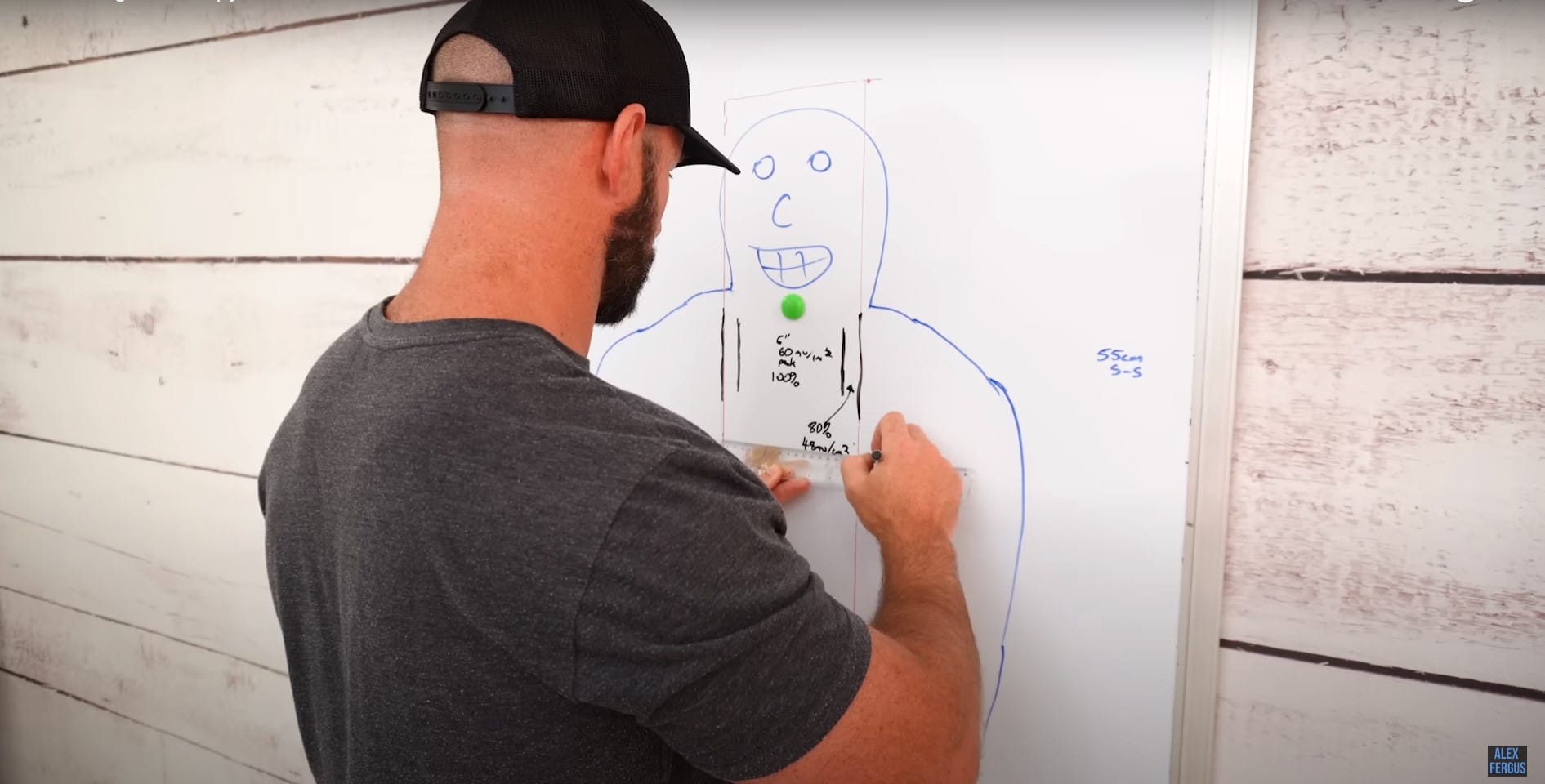
Finally, with all of this set up, I was able to plot the amount of therapeutic red light energy that was being emitted on to my body at various distances. Let's have a look at the results.
First Panel Experiment
So here we have the Red Light Rising Advantage 1500 with 500 LEDs. I've plotted the figures for my 6 inch reading on my on my diagram. First up, the red line is the width of the panel from LED to LED. Now the width of my shoulders is 55 centimeters (cm) across. The width of the panel the outside LEDs is at 17cm.
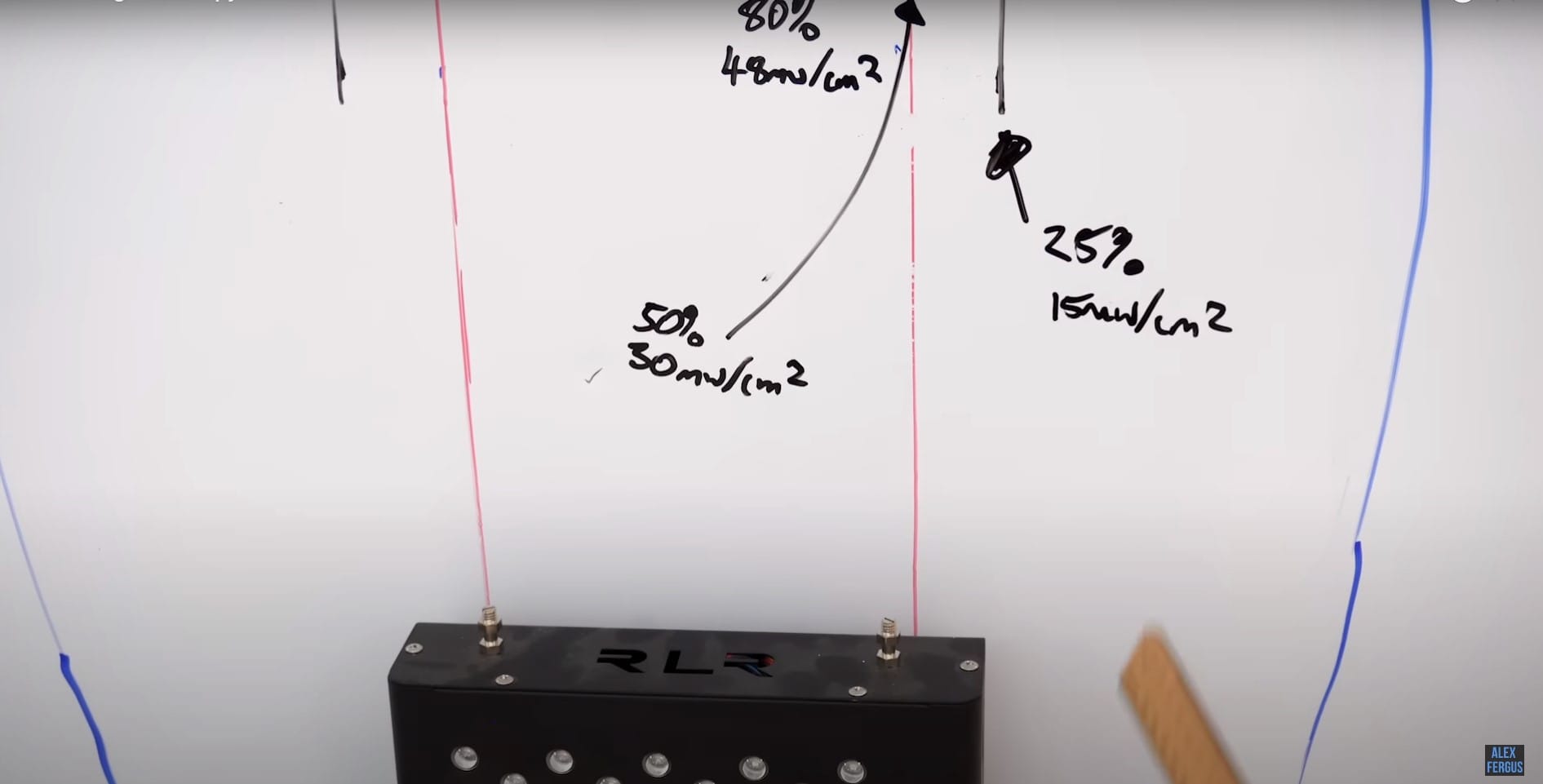
First up, these are readings at 6 inches from the panel the peak readings were 60mW/cm². This is our baseline 100% intensity remember this was testing right in the middle of the panel.
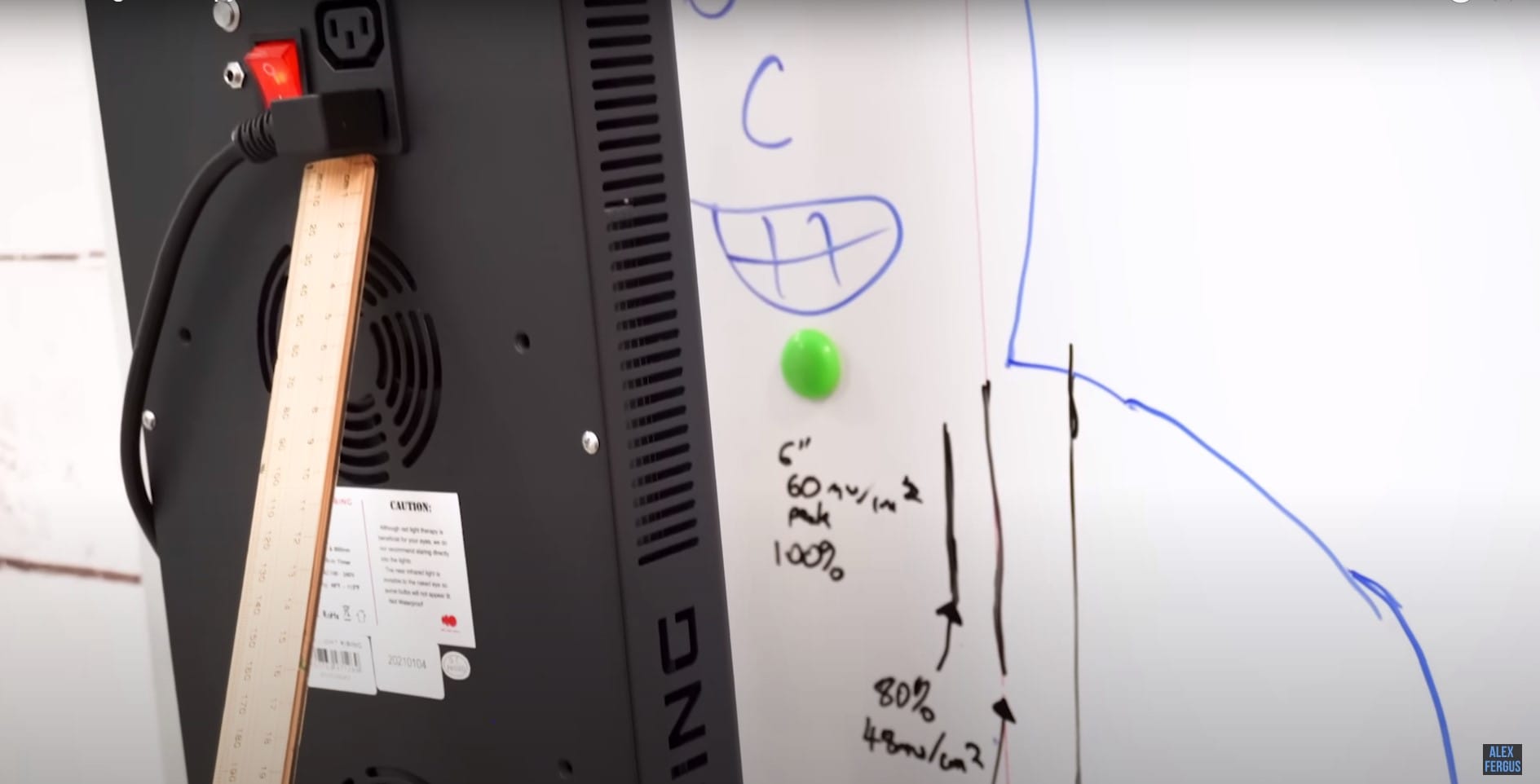
Now, as we come out towards the edge, the intensity or irradiance dropped.
This is quite surprising. Now, I wanted to find the 25% figure. We're only another inch or 2 off the edge of the LEDs where it drops to only 15 milliwatts.
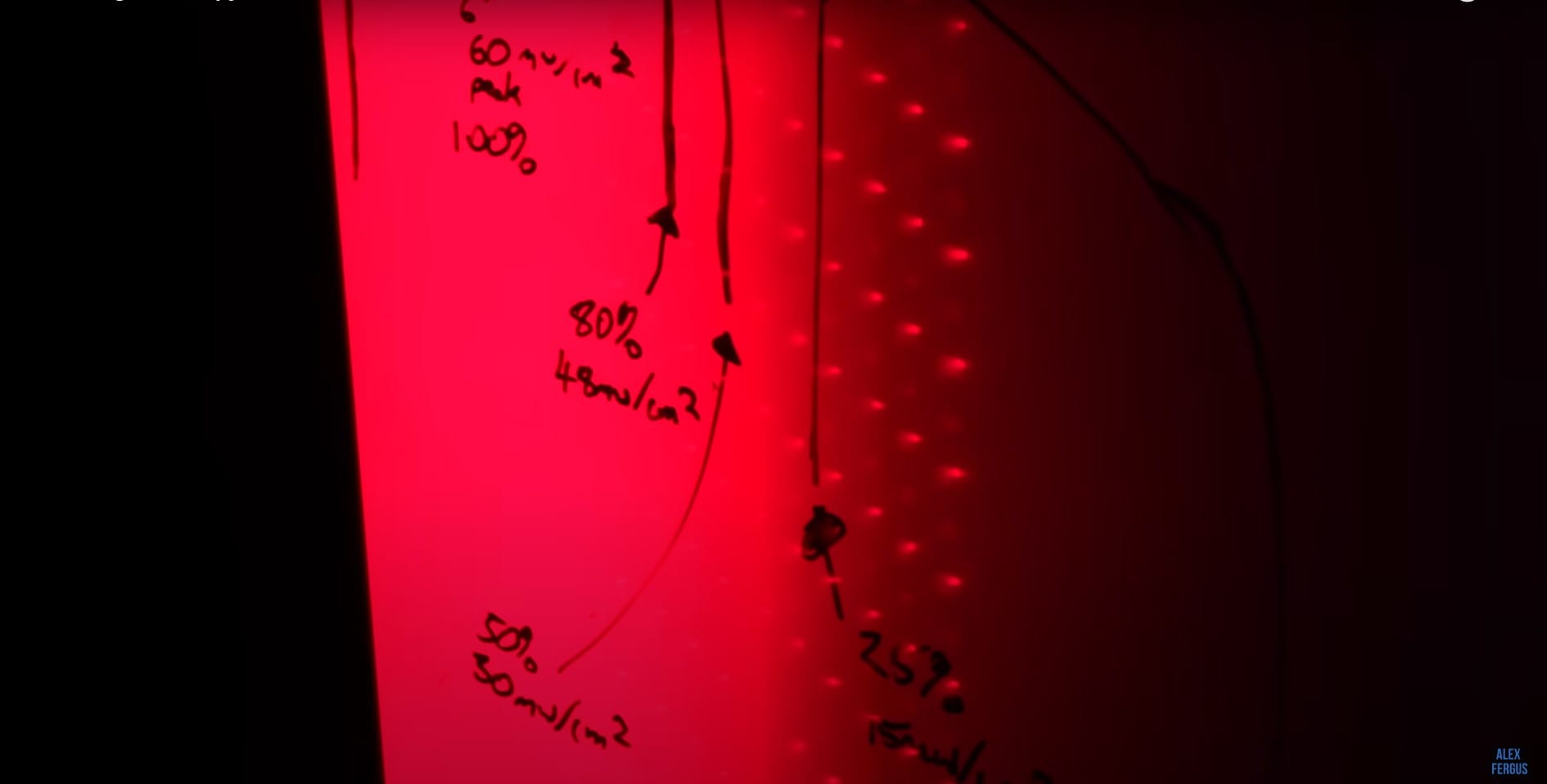
Remember, if using this figure for dosing that's what's treating my face sternum (breast bone), and my belly button. By the time you get to the outer edge of your heart you're getting considerably less irradiance. So you can see how this lines up.
So that's your 25% figures meaning that body part is only getting 25% or a quarter of what the middle was getting. So now what I've done is set the panel 6 inches from the whiteboard.
So it does visually what you see here is what we were seeing with the spectrometer as well. Remember, this is only showing the red light it's not showing the infrared light which is invisible.
Experiment From 12 Inches
Let's move out to the 12 inch treatment figures in green. In the center we had a 50mW reading. That's at 100% irradiance intensity in the center at this new distance. The 80% was actually a little bit closer than the 80% at 6 inches.
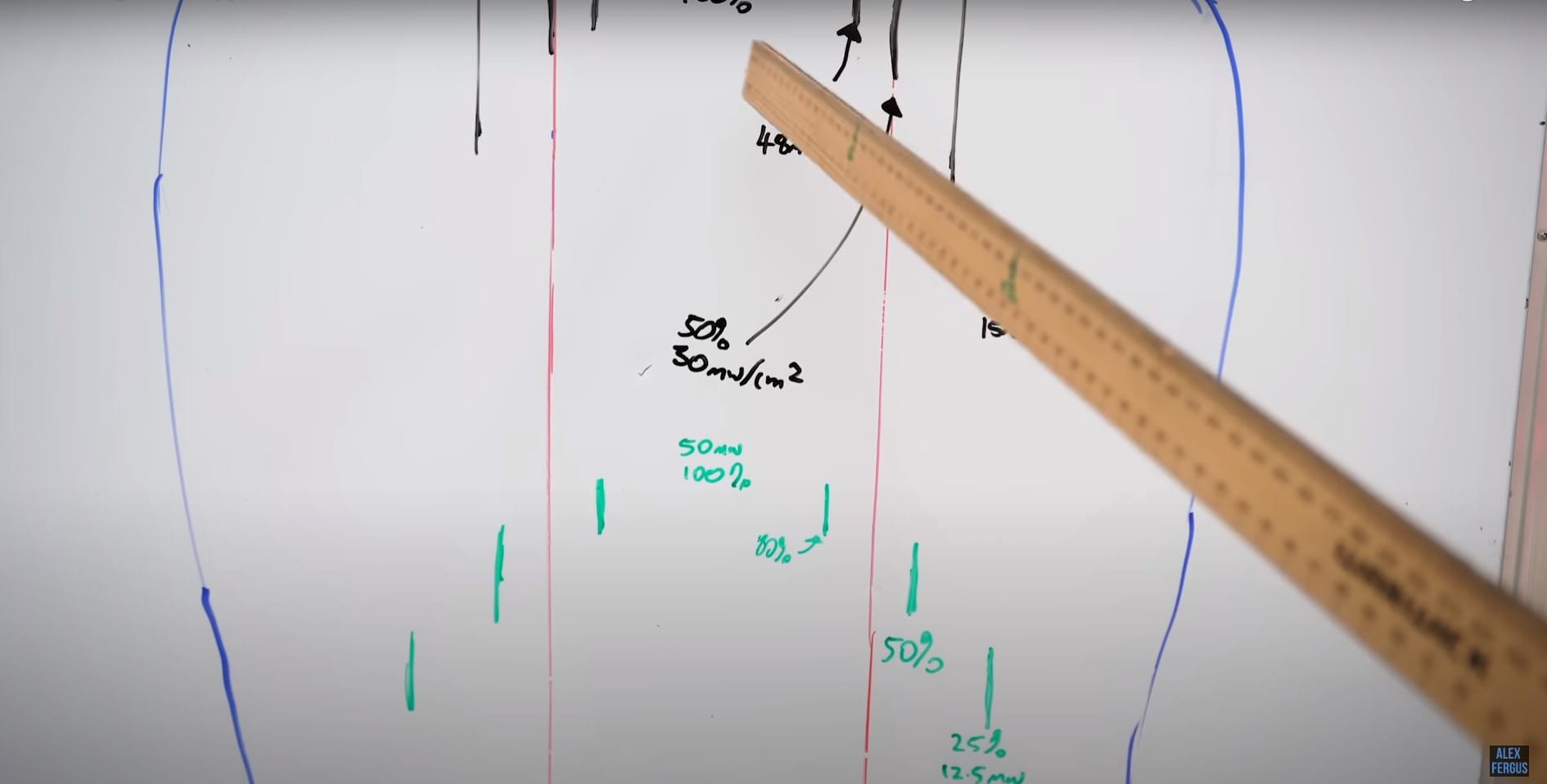
The 50% figure was a lot further out. We're coming off the edge of the panel, so that is 25mW compared to say the 50% at 6 inches which was on the edge of the LEDs.
So yes, you are getting quite a wide area there at 12 inches, but the downside is that it's only 12mW/cm² which is only a quarter of what we're getting at 6 inches!
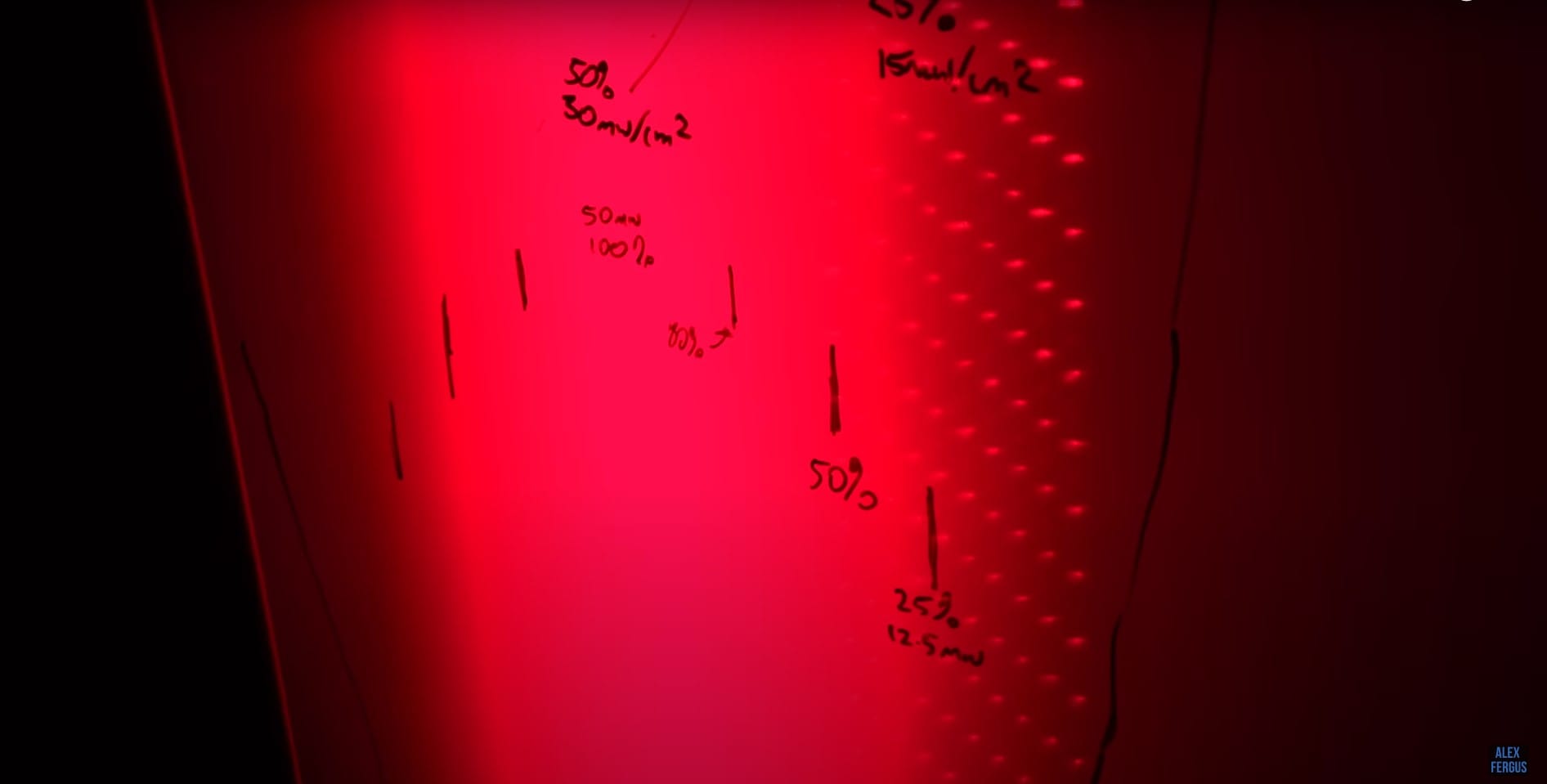
Let's see what this looks like on the panel at 12 inches. Obviously, it is a wider treatment area. It kind of does line up. You see that concentration in the middle dropping off around that 50% by the time you get to 25% it is a lot lower.
Experiment From 24 Inches
So now I'll share my 24 inch readings in blue. Remember, we've got 6 inches, 12 inches, and 24 inches.
The first thing to note is how much lower their irradiance is 28mW in the center (100%) compared to 50mW at 12 inches, compared to 60mW when we're at six inches. So we're getting a lot less light being this far away.
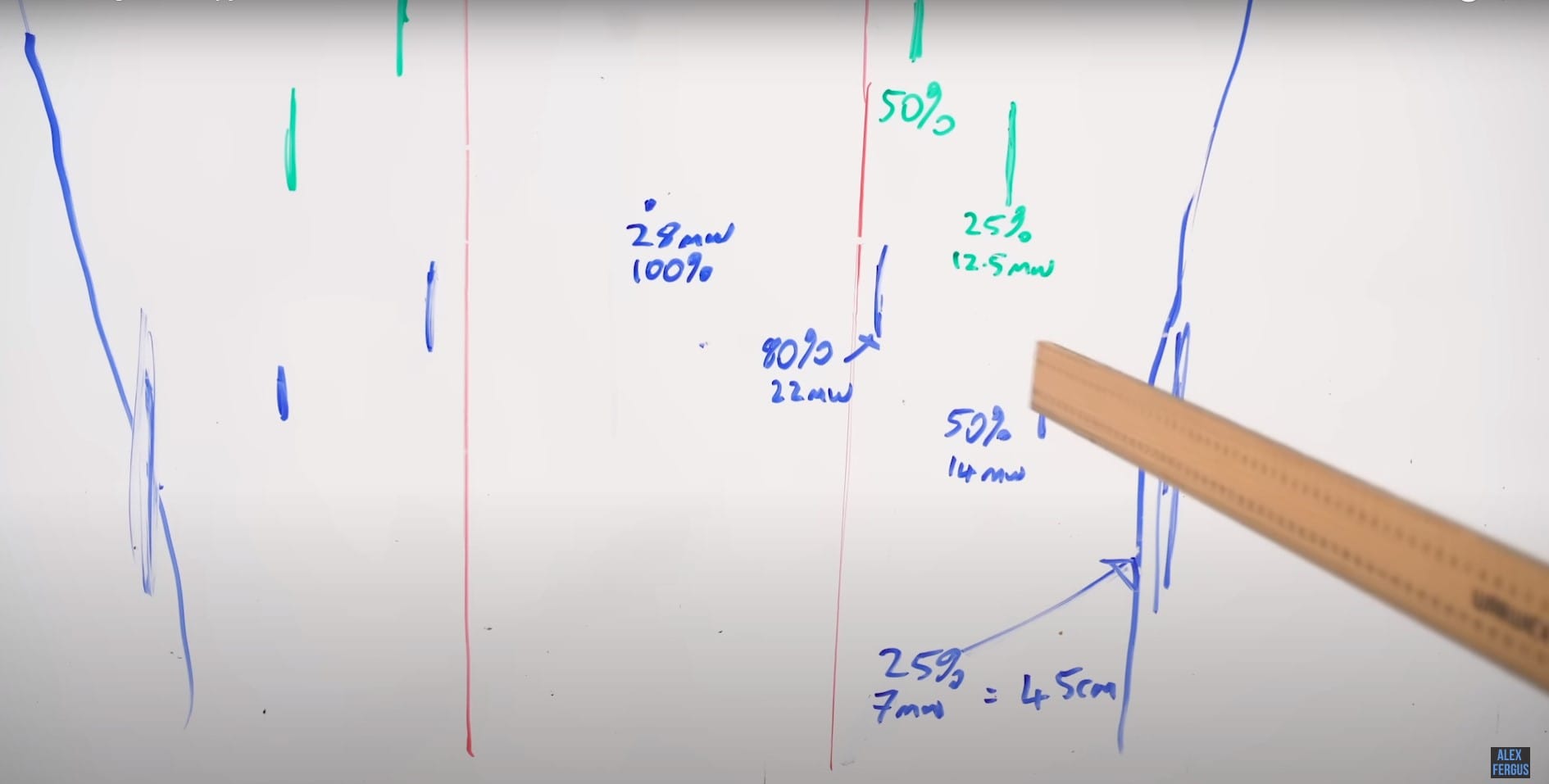
The total width from one side to the other was 45 centimeters. Remember, my shoulder to shoulder width was 55cm, so I am getting a good coverage of light at 24 inches.
However, the reading is very low. Of course, you're not getting 7mW all the way across because you're still going to get a higher 28mW figure in the middle. As you go further out, the power irradiance drops off. You are getting coverage, but it's really low.
Second Panel Experiment
So what I'm going to do is one more panel test. I'll use the Mito Red Mito Pro 1500 (code ALEX5 saves). You can see the width of the panel in relation to my body this is a little bit wider than the first RLR 1500 panel.
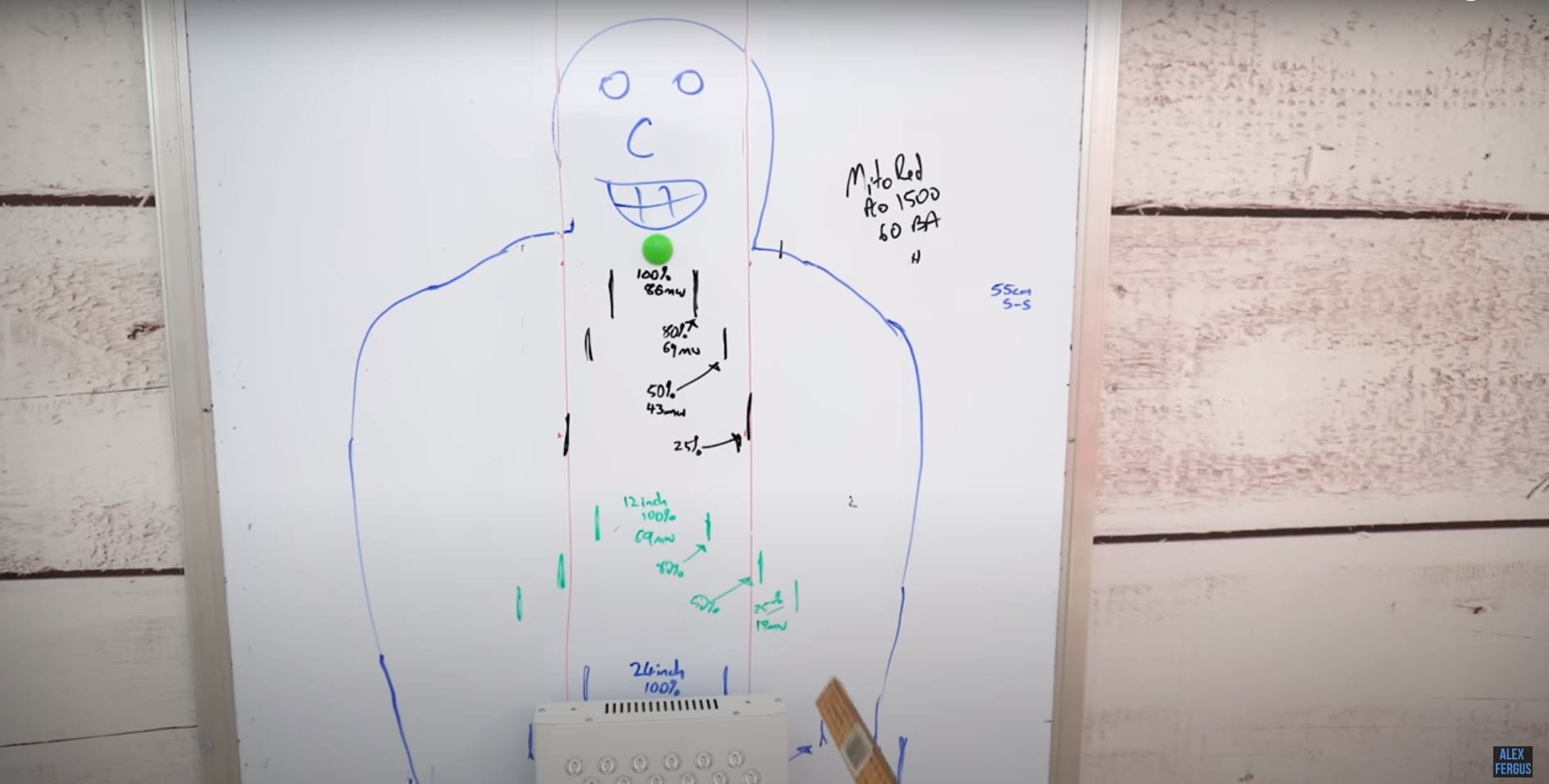
It's only about a centimeter wider when you're measuring from LED to LED, but keep in mind that this panel is a lot more powerful than the RLR 1500. So these new black marker lines are all the six inch readings. We're up to a 100% max power irradiance in the center of 86mW/cm², so that is a lot higher than the RLR 1500 panel.
If you're standing six inches away, it's six inches width from LED to LED. On those outside widths, you're only getting 25% of the light which in this case is about 20mW.
With the 12 inch readings in green, these figures are now actually more in line with what the first RLR 1500 panel was putting out at 6 inches. At 12 inches, we're seeing a wider spread comparing 25% at 6 inches and 25% at 12 inches.
Looking at that in relation to my shoulder width, it's not a lot. Then finally at 24 inches here, the power was 40mW in the middle 50%, and 25% was off to the side of my body. Remember, the first RLR 1500 panel was very low at 10mW/cm².
So even if you account for a 25% drop off that would be the 18cm across width. You're still going to want maybe three which is starting to get expensive especially if you also want to do the lower half of the body too.
Experiment Takeaways
First up, I have to share some limitations. We've only used two panels. Previously, I tested a few more panels, and they all had similar effects in terms of the light not going much beyond the width of the LEDs.
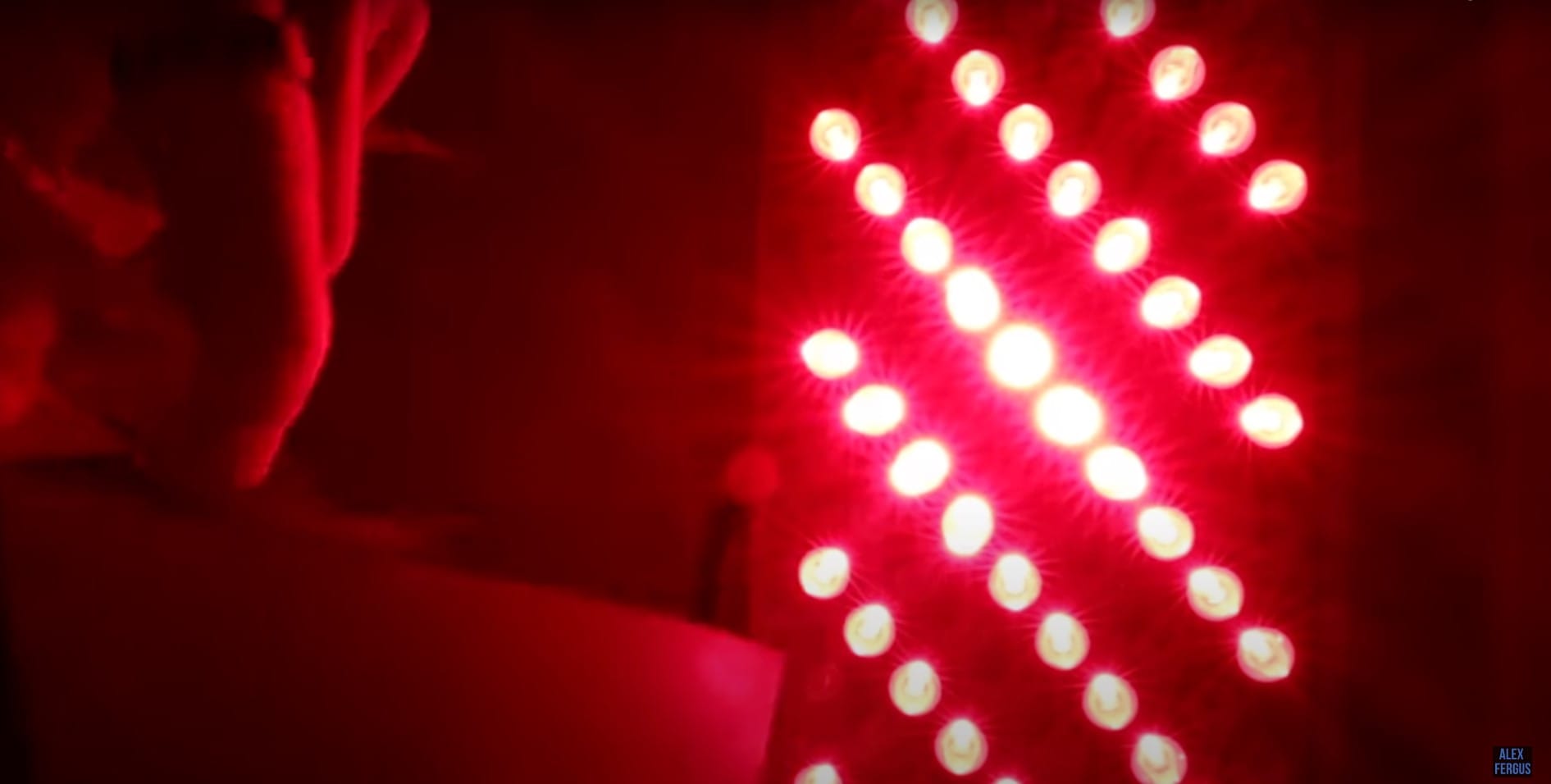
So we can make the assumption that what we see with these panels is going to be the same with other panels. It is fair to anticipate that most red light therapy panels are going to do exactly what we have been seeing.
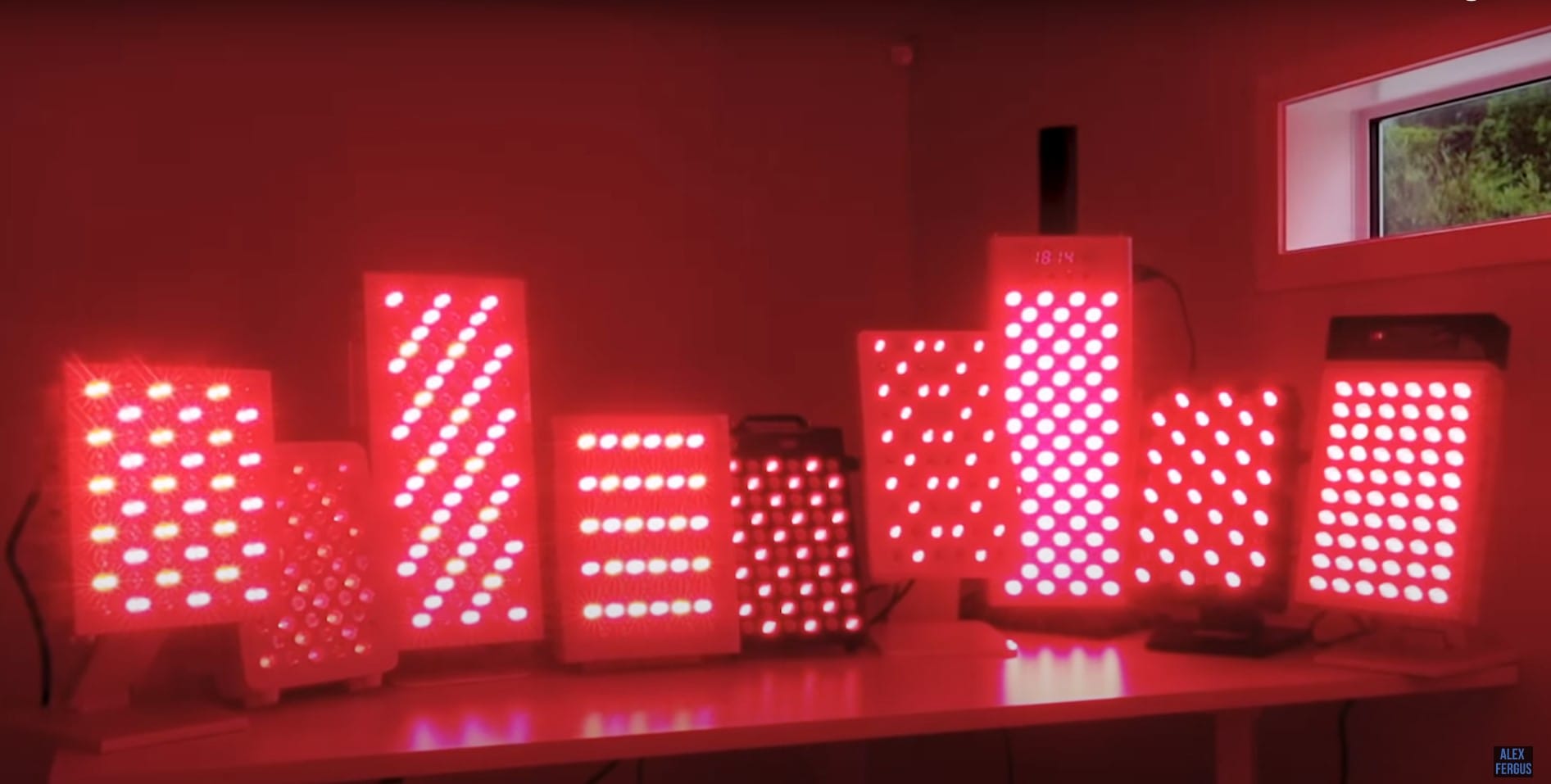
At the end of this year, I'm going to do another body panel comparison series. I've done two before. They're extremely popular, and lots of work goes into each one.
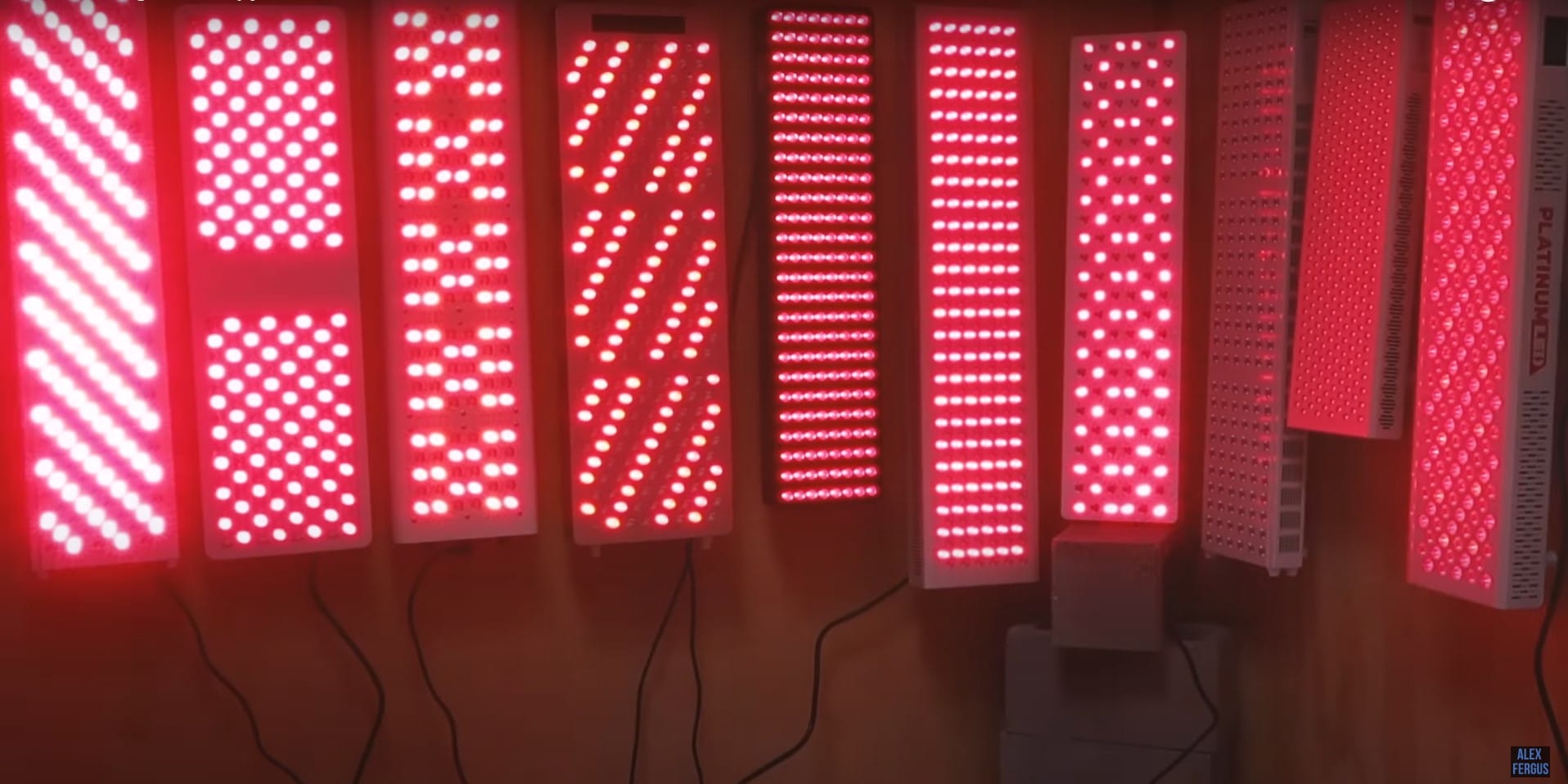
I'm going to do this type of testing for all of the panels I feature in that comparison series. It's going to be a lot of work, but I think it'll be worthwhile to include in that series. So be sure to check that out when the time comes.
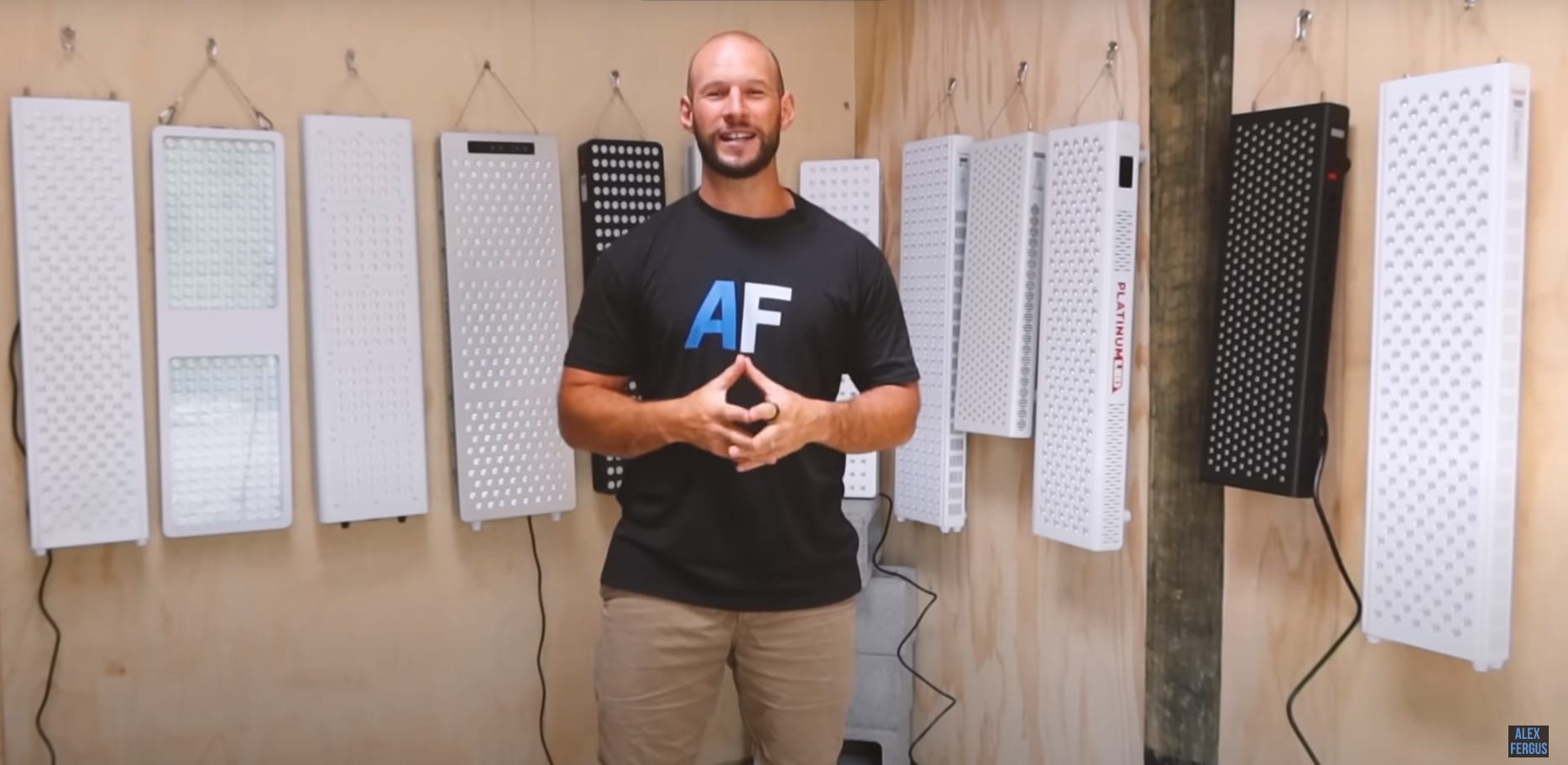
Beam Angle Irrelevant?
I have a few key takeaways here. Firstly, I think beam angle is irrelevant. I noticed it didn't have any correlation with the light outputs. It's similar to what I've seen in this comparison.
In theory, the second Mito Red panel has a larger beam angle than the first Red Light Rising panel. If beam angle was a significant factor, we should see the light disperse a lot more. But we weren't seeing that. In fact, the opposite was the case at the 6 inch range.
All of this shows how hard it is to come up with dosing protocols. I get dosing questions all the time. There are so many variables though. I've touched on it before, and I will eventually present more findings as I assess it all.
If you're using a listed power reading whether it's the manufacturer's, the lab's, or my test measurements, that's only true for one spot on the panel.
How do you account for the higher intensity you get in the middle with less on the side? Currently, we just have to work with averages. Even then, it is very tricky. So that's something to keep in mind.
So if you want that intensity across all areas of your body, you're either going to need to use a lot of panels or else do a treatment on the left shoulder, the center of your chest, the right shoulder, the center of your back. You'll end up spending a lot of time, but that's what you'll need to do.
Of course, the alternative is you move further back from the panel. The downside is that the power irradiance drops off so much the further you are away from the panel.
Again, you're still going to get more power in the middle than you would on the outside since you're not getting a true even blend of light all the way across. The further you are from the panel, the less irradiance you will get which means you will need to stand there for longer.
So what do you do? Should you stand closer and move every few minutes to treat different areas? Or is it easier to stand further away and get a wider treatment area? Naturally, you would have to stand there for longer to make sure you get the adequate dose. It comes down to personal preference at this point because there are many variables and unknowns.
My Final Conclusion
What we do know is that red light therapy works! The science proves that it works, and anecdotal reports are through the roof! Hopefully you now know about the implications about red light therapy treatment protocols.
It will be cool to test more panels like this, and that will be something I will do in the end of year comparison series. I will have to incorporate this into my reviews somehow because it is quite interesting. If you've thought of something that I should do or test, please leave a comment below.
Another thing that comes to mind after seeing this data is that actually those larger commercial professional panels with something like 2000 LEDs actually make quite a lot of sense now because you will get a nice wide coverage of light.
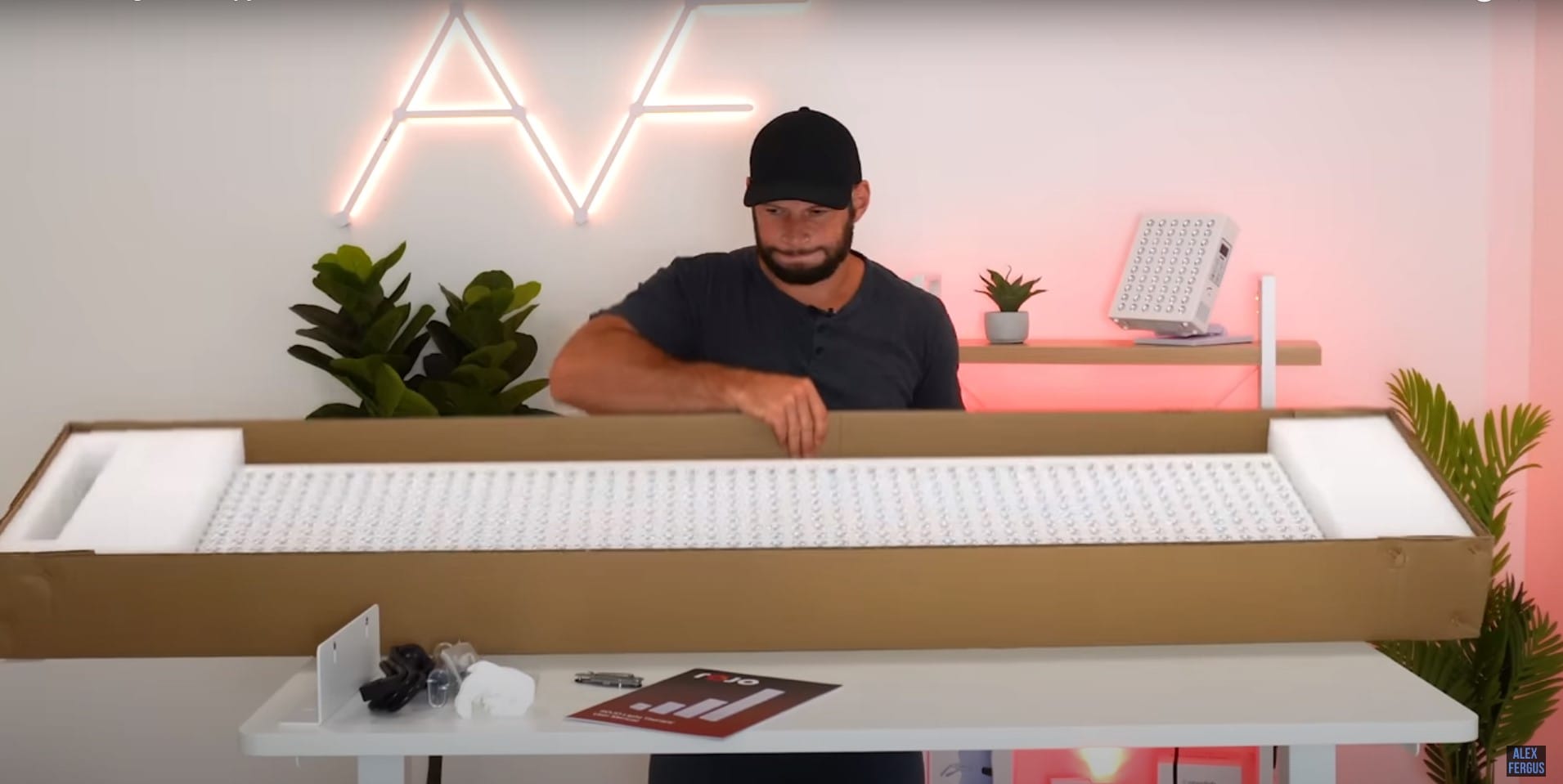
There's no big gaps in the middle from the joints when you have to click multiple panels together. If they're designed properly, you should get a nice concentration of light across a wide area of perhaps a foot or so which will treat the torso of your body.
Following up on that, I now think a red light bed is going to work really well because you should get a nice even spread of light across both sides of the body. And you wouldn't have to move around or or adjust panels.
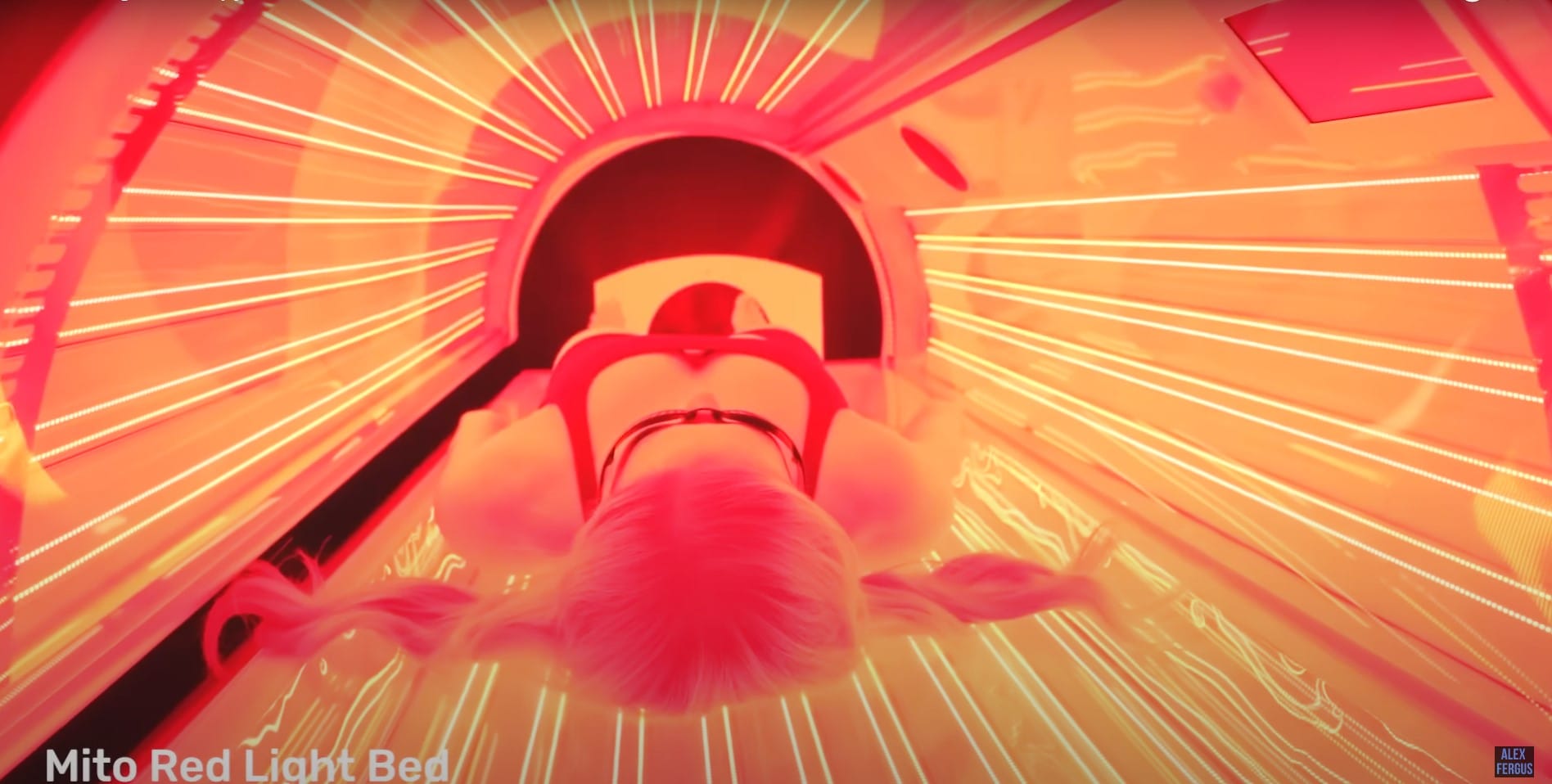
Of course, a bed does cost a lot and does take up a lot of space. So you still have those issues. But if you're after an optimal spread of light, it is something to keep in mind.
Maybe those low powered LED mats where you lie directly on them or wrap the body in them might also have a lot of benefits. Sure, they're not putting out nearly the amount of energy we're seeing in the large panels, but because they're so close to the skin and the LEDs are evenly spread out, you should get quite an even spread of therapeutic red light.
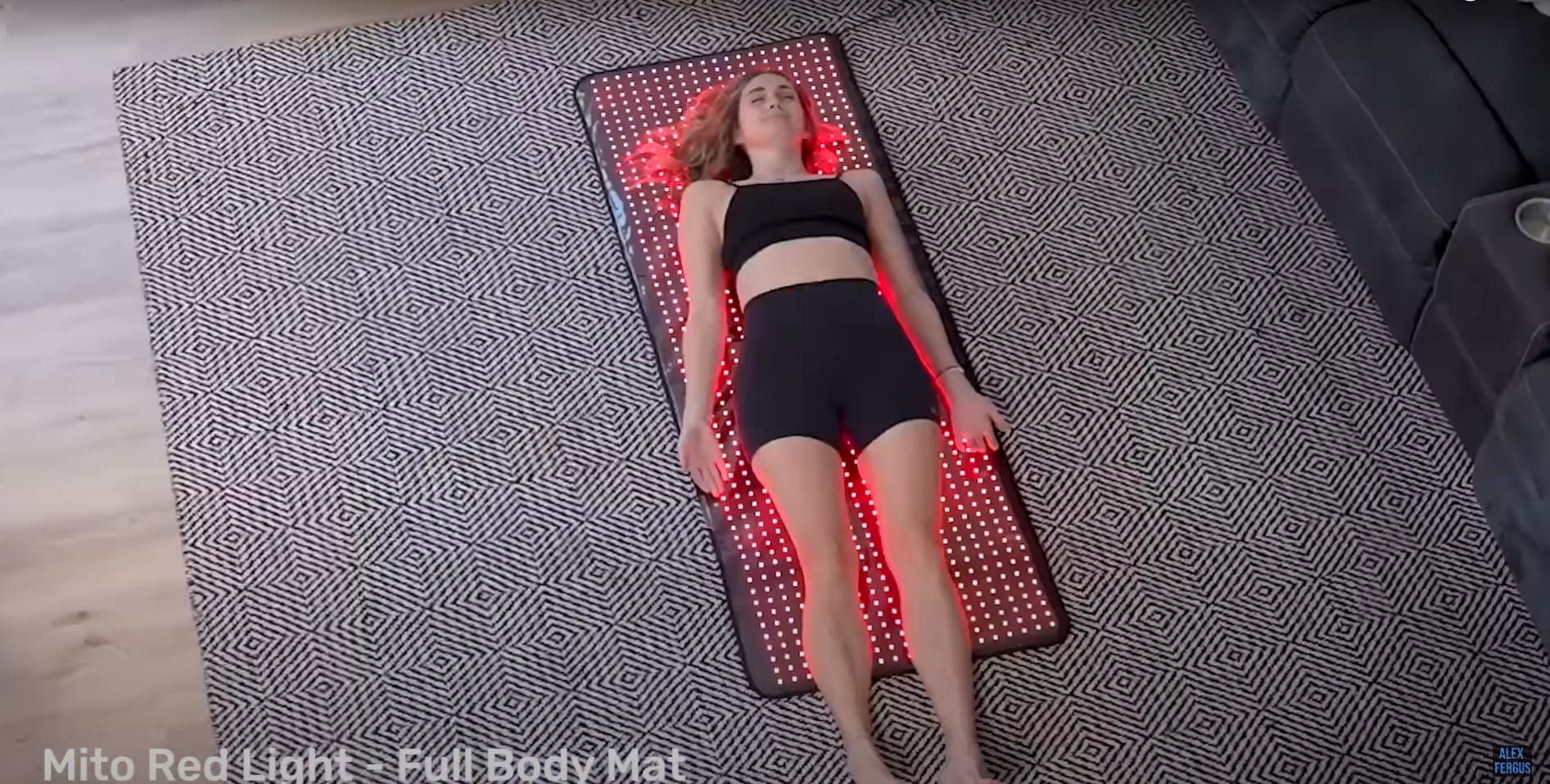
I'd have to do some testing to see exactly how much light they are putting out because you may have to spend say an hour on one of them to match what you'd get in just 10 minutes with a panel. Still it is something to factor in. It is something that I need to test further, so be sure to keep an eye out for that.
In the meantime, I highly recommend checking out this video of my 2021 comparison series where I do what I call hot spot testing. Effectively, I'm doing this exact test on 12 different panels but simply using a visual aid. It's quite interesting to see how the light emitted from every panel was quite different.
So if you're enjoying all this testing, please let me know. It does take me a lot of time creating this content, and I really do appreciate your comments.
This Article's Products With Benefits:
- Red Light Rising Advantage 1500 link plus discount code ALEX
- MitoPRO 1500 link plus discount code ALEX5
Extra! Extra! Read All About It!
✅ The Ultimate Red Light Therapy Panel Shopping Tool Tutorial Article
✅ Red Light Therapy for Arthritis: The Complete Guide
✅ Mito Red Light: The Ultimate Company Review in 2023
✅ James Carroll Photobiomodulation Course: 16 Amazing Lessons Learnt
✅ Huberman and Light Therapy: Science, Devices and Tips
Be In The Know With These YouTube Videos
✅ Mito Red MitoPRO 1500 review
✅ Red Light Rising Advantage 1500 review
✅ Full playlist for my body panel red light therapy comparison series
✅ TOO GOOD To Be True? Red Light Therapy Benefits Reviewed
✅ My red light testing methodology
